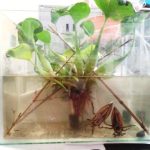Mangrove forest is considered an effective buffer between land and sea, receiving large amounts of inorganic and organic trace elements, as well as protecting coastal water from pollution. However, this possibility may depend on the characteristics of the sediments, botanical ingredients, and hydrology.
The ecological, environmental, and economic importance of mangrove forests has been widely recognized in the world and proven by scientists with data at different ecological scales and regions. The potential role of mangrove forest can include eight main types of environmental services: 1) Carbon adsorption, storage services; 2) Sedimentation and sludge volume reduction services; 3) Coastal erosion control services; 4) Breakwater Service; 5) Service of providing clean water, removing heavy metals and pollutants; 6) Services of providing spawning grounds; 7) Landscape beauty services, and 8) Food ingredient supply services. The current Payments for Forest Environmental Services (PFES) policy in Vietnam includes payment for mangrove environmental services through aquaculture and spawning grounds.

Figure 1. Types of environmental services of mangrove forest
The variability of trace metals in mangrove forests is complicated by the influence of different biogeochemical processes throughout the tidal zone. Because of their toxicity to mangrove biodiversity and human health, trace metal cycling has been a serious problem studied by many scientists. The research group of Dr. Nguyen Thanh Nho (Head of the Environmental & Resources Management) is one of the first groups to conduct surveys and research the ability to filter pollutants to clean water sources of mangrove forests in Vietnam. The main studies focus on the distribution behavior of metals in water, soil, and the bioaccumulation capacity of mangrove vegetation. In addition, the team has studied the effects of the consequences of the conversion of mangrove forests to other activities such as aquaculture and residential development. The team also assessed the potential risks to people’s health when using food derived from mangrove forests.

Figure 2. Sampling activities in mangrove forests








